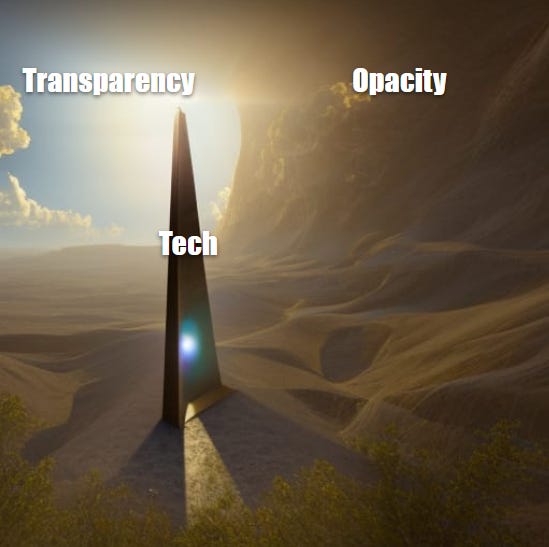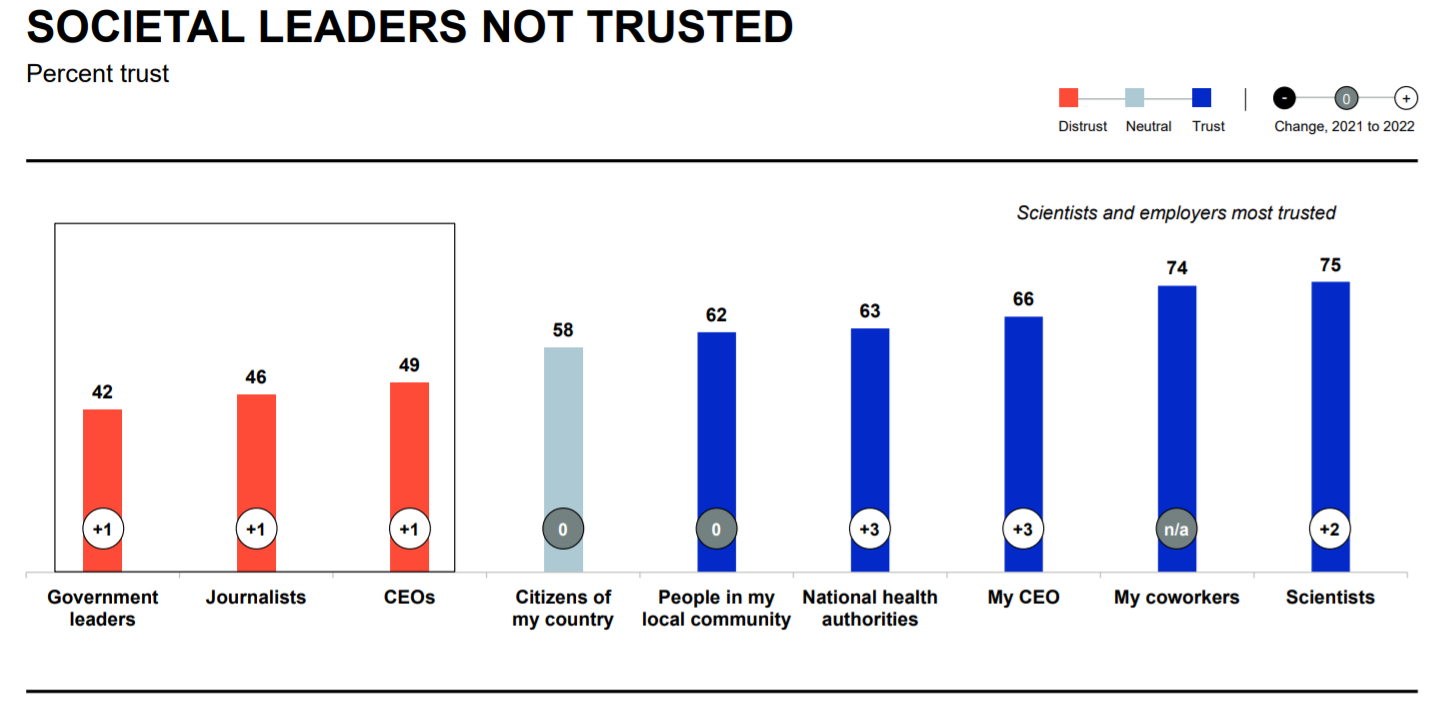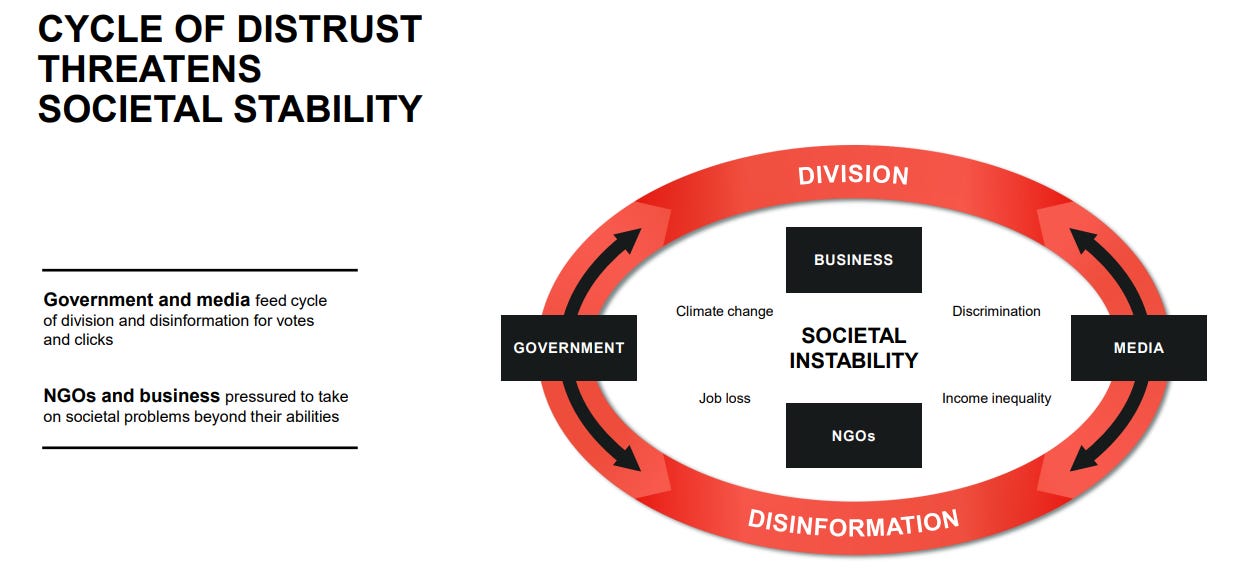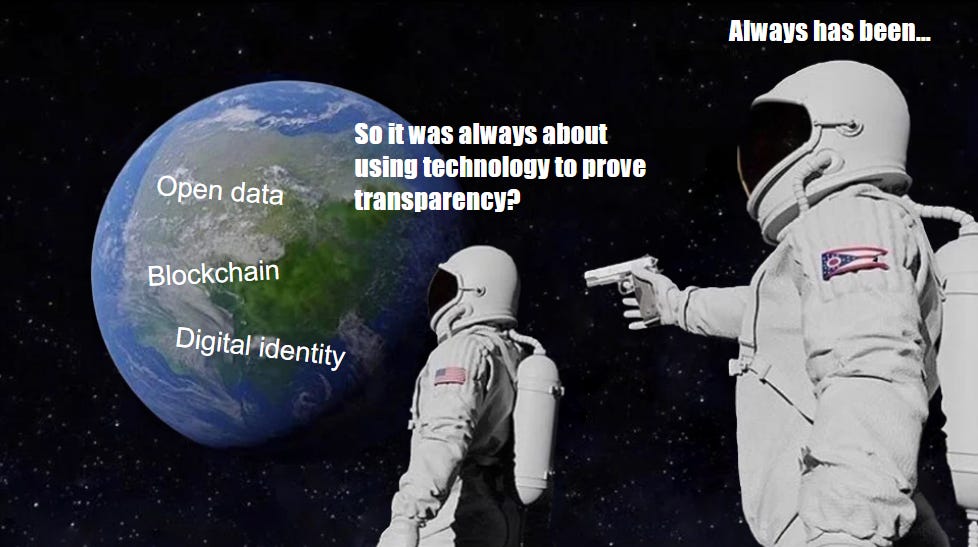Moving Towards Provable Radical Transparency
Rebuilding societal trust with technologies that enforce transparency
Summary:
Trust in institutions is low and this can lead to societal instability
Transparency is rising due to current events (e.g., FTX collapse) and technological advances, such as new data sharing methods
Radical transparency can be proven and enforced through technology
Implementing radical transparency is beneficial to all types of entities
Trust Is ‘Down Bad’
Trust in governments, media, and organizations is near its lowest in decades.
Whether it’s the polarization of mainstream media, the constant scandals like the most recent FTX meltdown or political scandals, or [name reason for why you can’t trust big corporations here] - sometimes it seems like society might just fall apart from all of this.
Source: 2022 Edelman Trust Barometer
And with some of the trends in technology, there’s worries about this instability being exacerbated by things like:
AI enabling deepfakes for spreading misinformation
The rise of surveillance capitalism
Use of social media networks to spread misinformation
And the list goes on…
Can we re-establish trust and make sure we don’t get ourselves into a situation where we’ve got a death spiral of societal instability?
Radical Transparency Can Save Us From Ourselves
Radical transparency is a philosophy where all information is openly shared with all stakeholders - like employees and the general public if you’re a company. This could mean that everything from financial data and business decisions to employee performance and salaries are made available to everyone.
The idea behind radical transparency is that by being open and transparent about all aspects of a business or entity, they can build trust with their employees and/or stakeholders, and create a more collaborative and efficient environment.
Radical transparency also lives on a spectrum, where in some cases there may be some limitations to what is made fully transparent. For instance, in a business, that might mean certain trade secrets or proprietary data that’s important for the business to maintain its competitive edge remains private.
The point is, make as many things transparent as possible to increase trust and foster better relationships with all stakeholders. And hey, Ray Dalio uses it, so it’s probably a good idea, right?

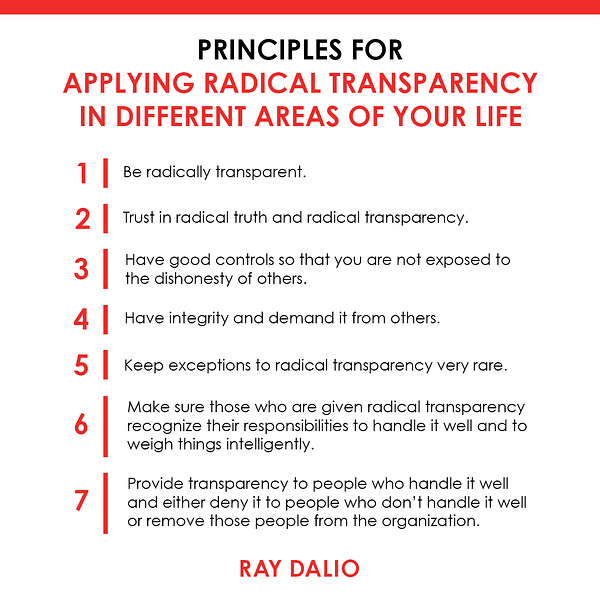
The World is Moving Towards Provable Transparency
Just saying you're transparent and being transparent are two different things. We’re seeing more and more emphasis on the need to both enforce and prove transparency.
Provable transparency coming out of the FTX debacle
The recent FTX collapse has driven reforms on practices for the digital asset industry to make changes in transparency and reporting. And not just a “we will change and communicate better, we swear” type of promise like has happened in other industries (we hope, anyway), but actually moving towards models that prove they’re being transparent.
In the case with FTX, now exchanges are moving to prove they have the reserves to back up customer deposits and also prove other parts of their financials, like their liabilities.
The way they are able to prove this is through making records publicly verifiable and interfacing directly with underlying blockchain data when applicable, removing the need to trust the company or a third-party that they are solvent or not taking on risky practices, such as those that led to the collapse of FTX.
Well, they might not completely be provably radically transparent yet (or even close, really), as they are still relying on auditors and not everything is on-chain, but they will need to continue moving in this direction until they are fully radically transparent.
Competition with Decentralized Finance (DeFi), which is already provably radically transparent, will get harder if they don’t.

What else is driving transparency?
There are many technologies and practices being developed and adopted that will bring us to a radically transparent future.
Increased use of open data initiatives, which make information more accessible to the public.
Increased use of secure data sharing methods, such as through new encryption technologies and blockchain, making it easier to implement radical transparency in ways that don’t reveal sensitive information.
Adoption of decentralized identity solutions and blockchain technology which can tie people’s online/digital and even physical world actions to an immutable resume-like record. This can provably show you everything a person stands for and has done (at least that they wish to share). Think about how this could be used for politicians or executives at large organizations - it would make it harder for them to hide what they’re really about.
Increased transparency in the corporate sector, such as more transparent supply chains, better disclosure of information, and improved corporate governance.
How Do We Implement Radical Transparency?
So how is this actually being done and what is the outcome?
Governments / Gov. Agencies - Making all relevant information, such as budget data and policy decisions, openly available to the public. This could help to prevent abuses of power or corruption.
Companies - Making all financial data and business decisions openly available to employees and stakeholders. This could help to build trust among employees and stakeholders, and could also help to prevent unethical behavior or decision-making.
Nonprofits - Making all information about the organization's operations, including its finances and decision-making processes, openly available to the public. This could help to increase trust in the organization and its mission, ensure it’s delivering impact consistent with its goals, and could also help to prevent things like mismanagement of funds.
Conclusion
While it might be a little uncomfortable, more and more information is going to be open, publicly accessible, and publicly auditable (provable) over the next decade.
It will be harder to lie and spread corruption. Risk management will hopefully be tighter. More safeguards will be in place to protect the public. We’ll all be more efficient and hopefully start to trust each other more.
But it starts with organizations and the general public adopting the principles of radical transparency and the technologies enabling it - and the ones that do it early will benefit the most.





